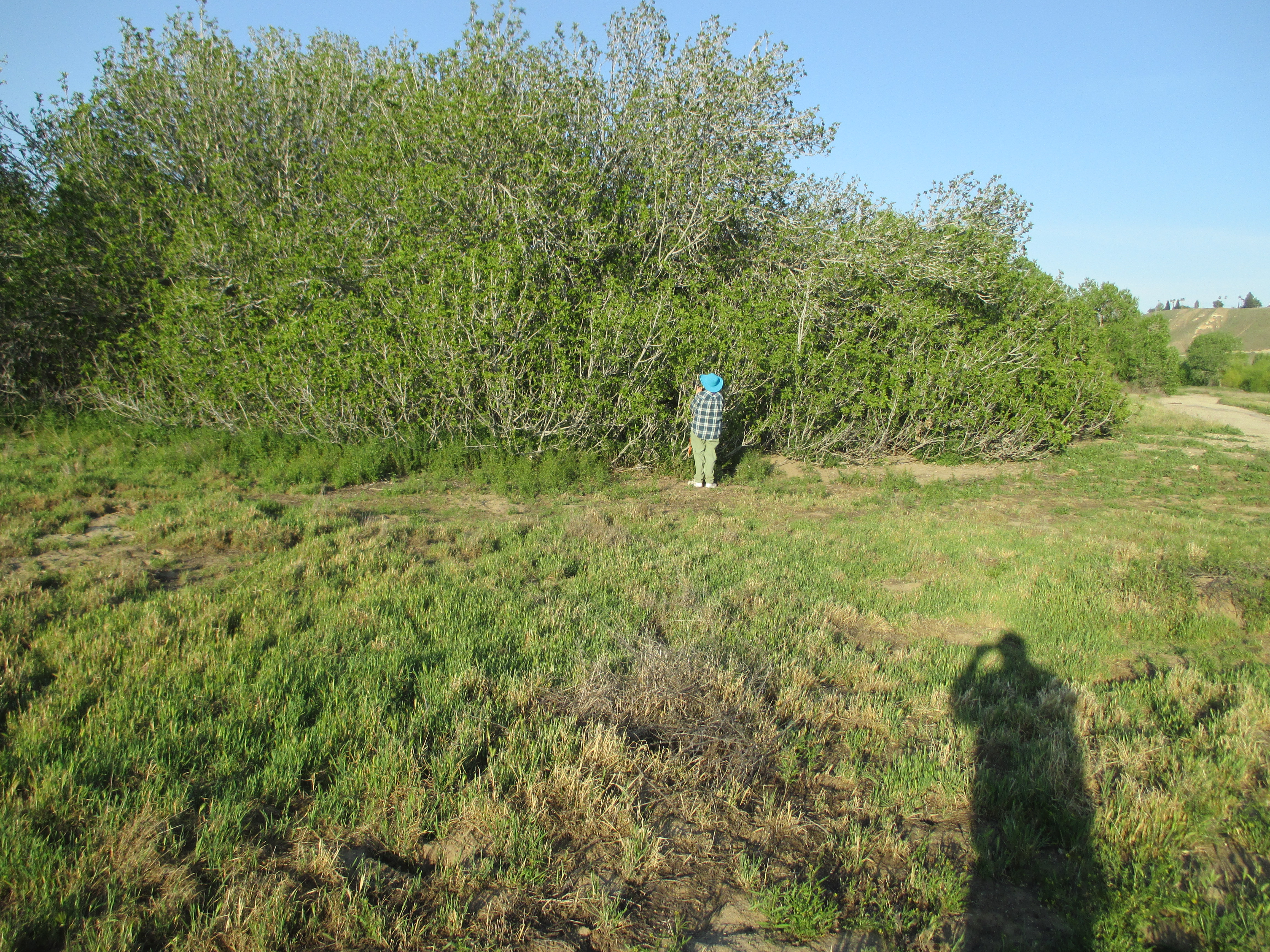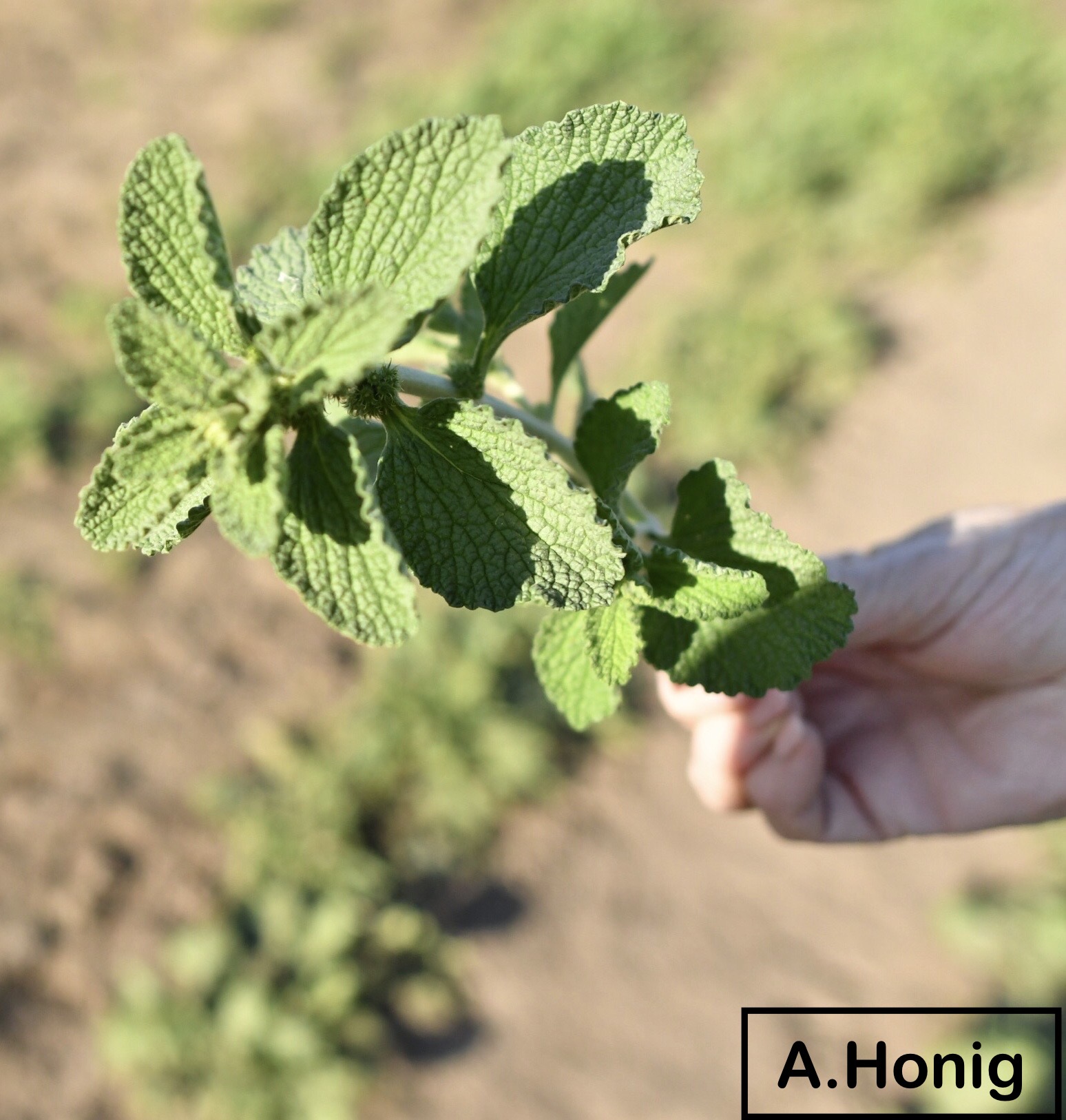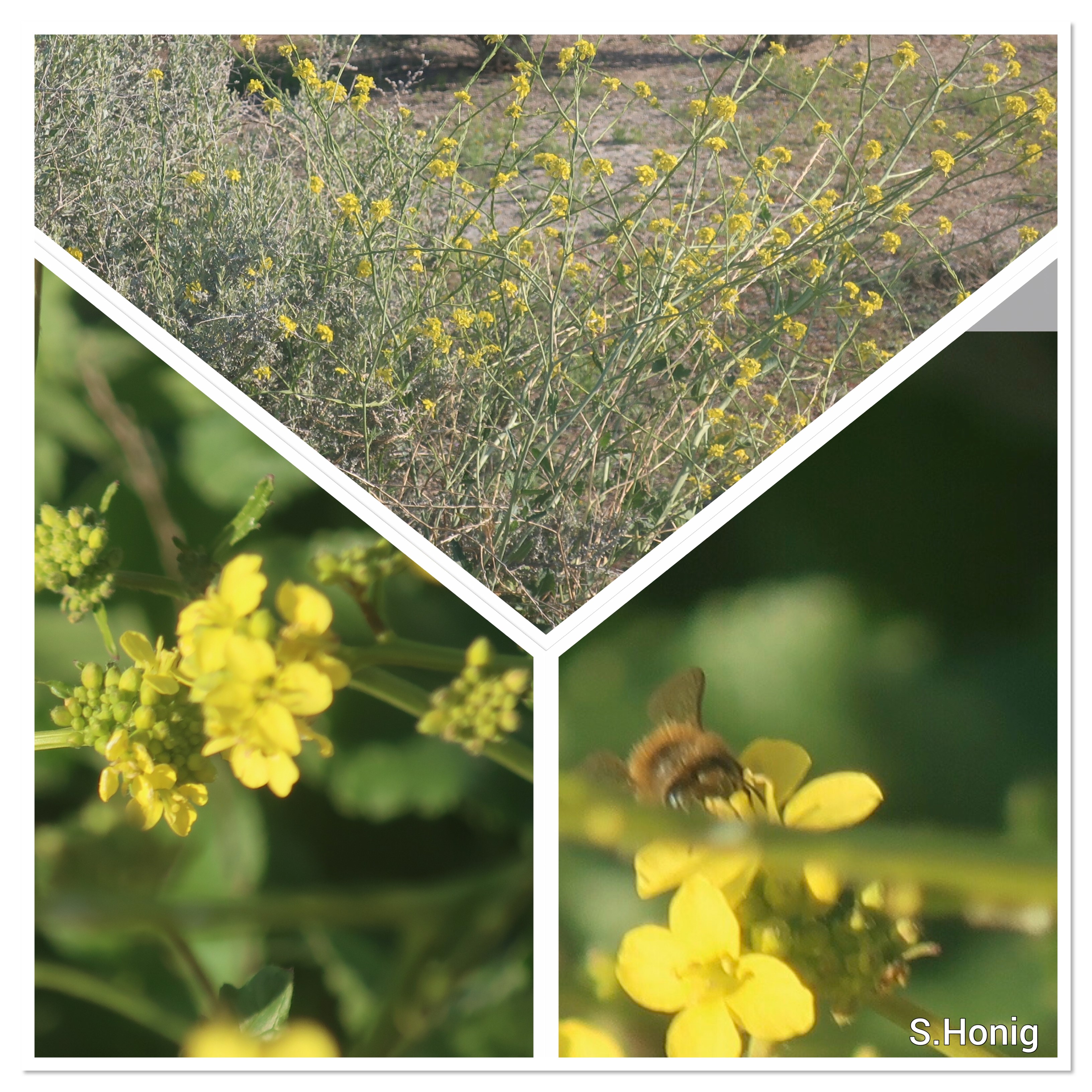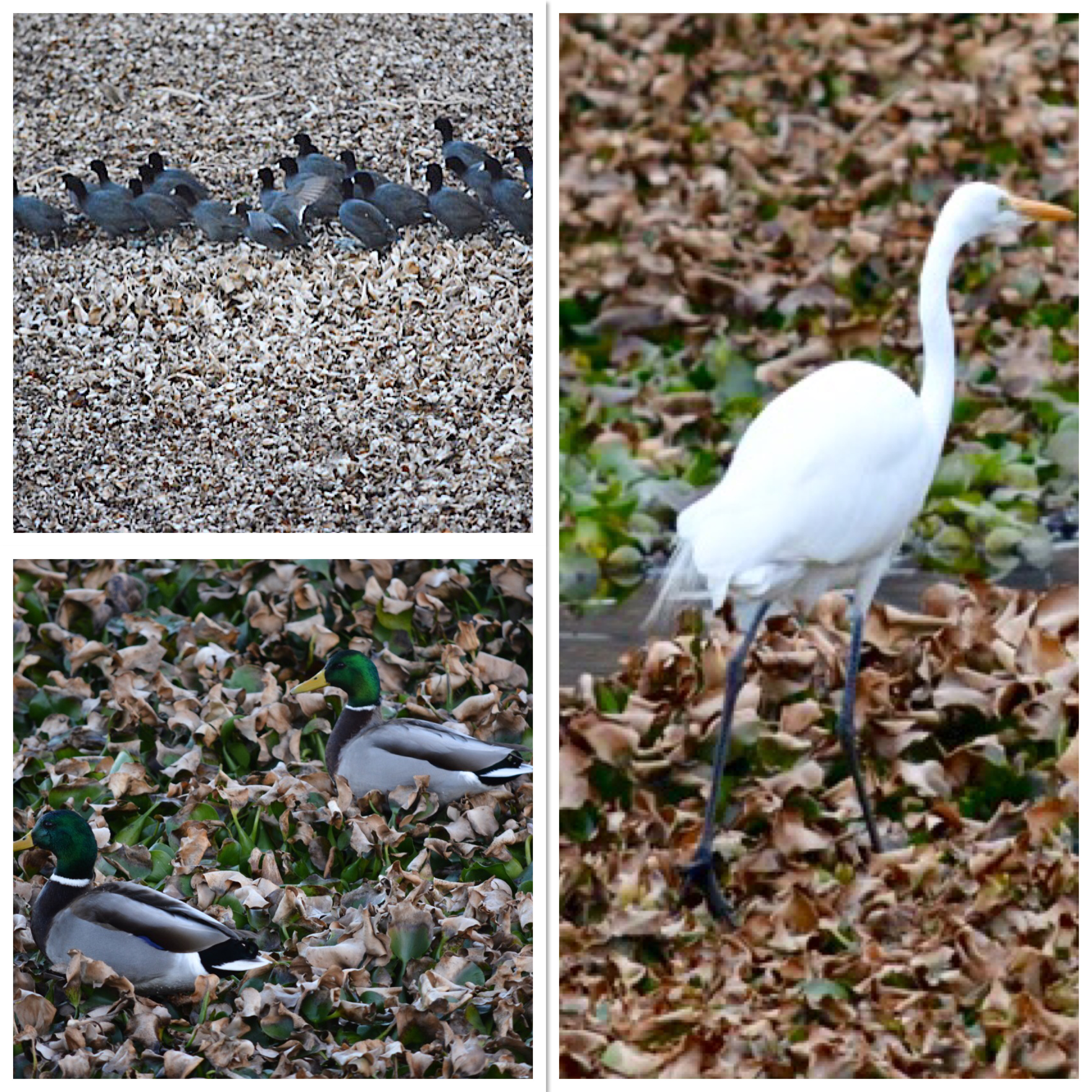Non-Native/Invasive Plants that grow along the Kern River Corridor
ARUNDO DONAX (Giant Reed)
Native to Eurasia; It is an invasive weed.
Botanically, it is a grass that can grow to more than 20’ high; it is often mistaken as bamboo (also a grass). It spreads by rhizomes and not by seeds. In the Panoramia Vista Preserve, It is found in localized clumps on the banks the river. It grows in such density that any other plant life is crowded out. It is difficult to eliminate; it cannot be dug out effectively. Chemicals can be used but it is a laborious process. Each reed must be cut down and herbicide immediately applied to the stumps. Care must be taken to protect the watershed.
Conservationists may hate Arundo, but oboe or clarinet musicians prize it as a source for high quality reeds
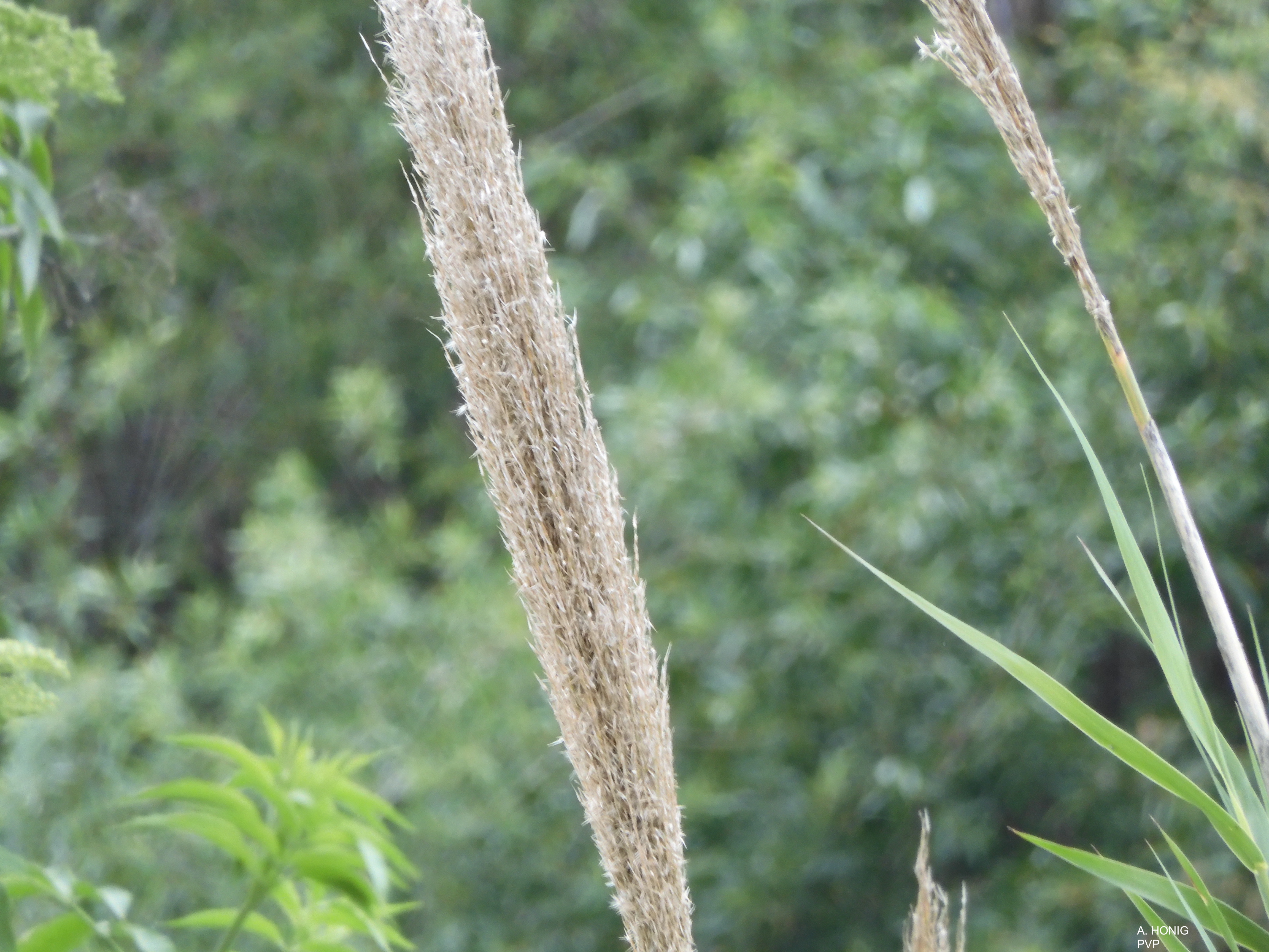
Arundo Donax flowers. Date: April 18, 2020
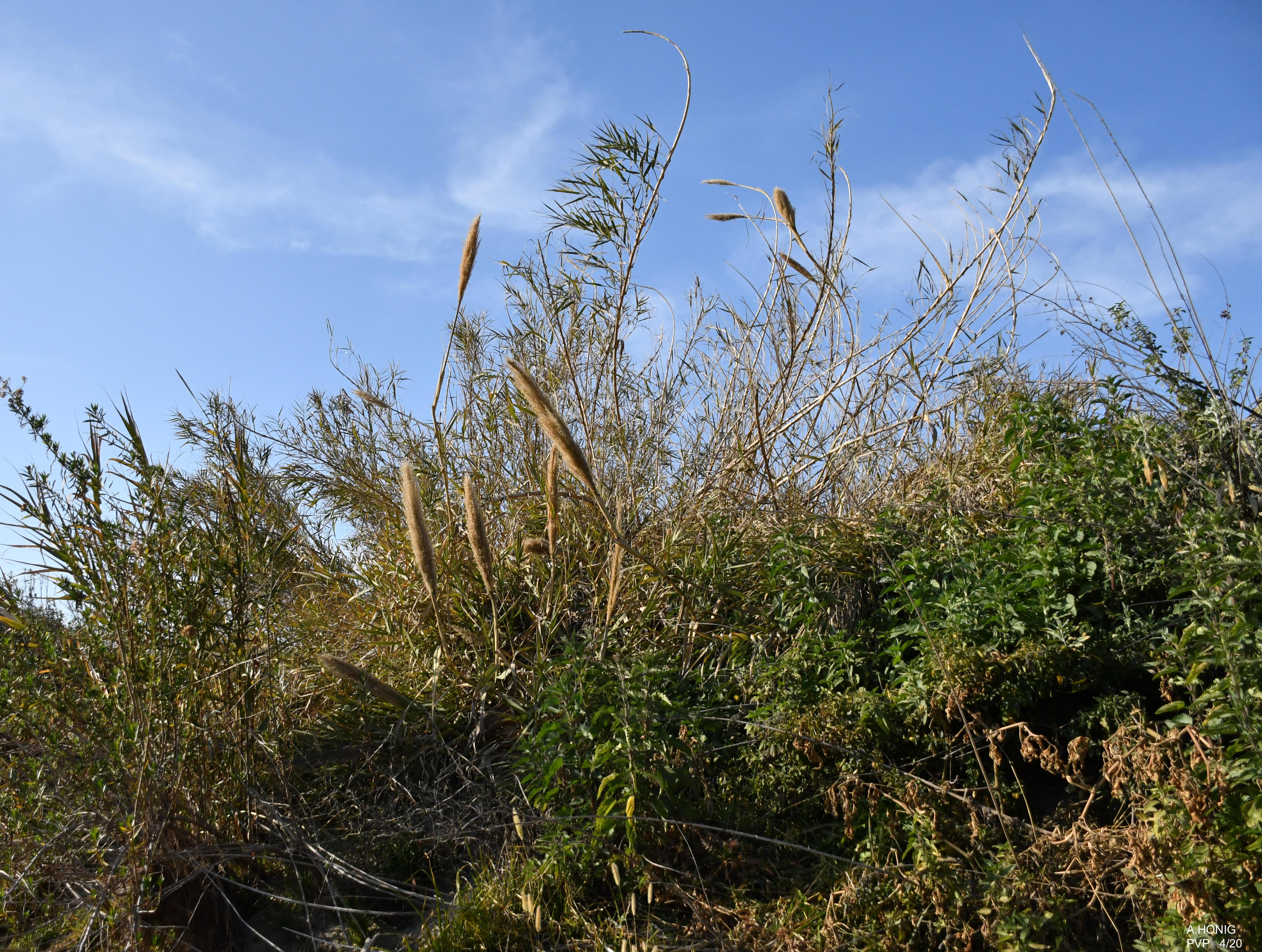
Arundo Donax clumps.
ATHEL TAMARISK (Tamarix aphylla)
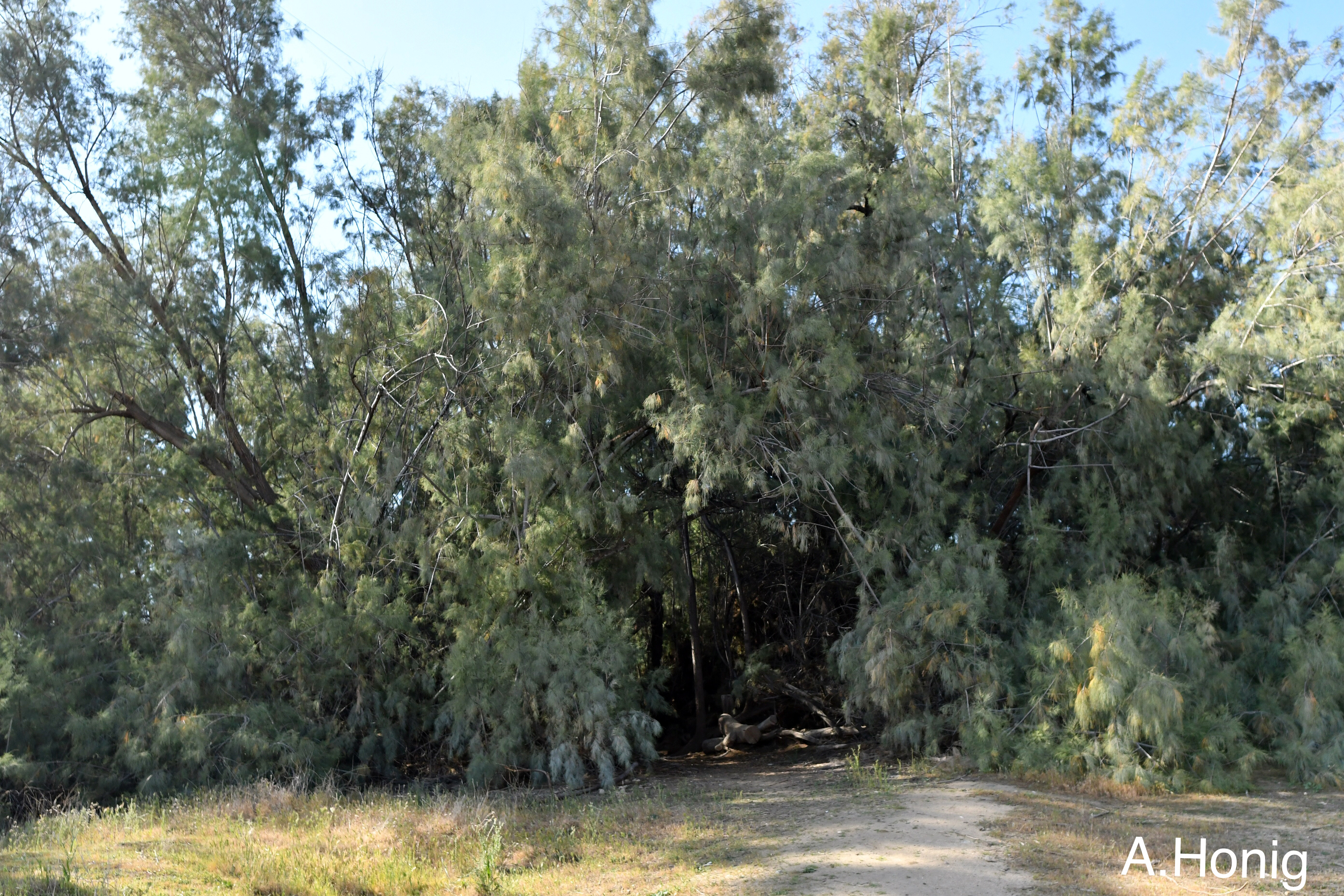
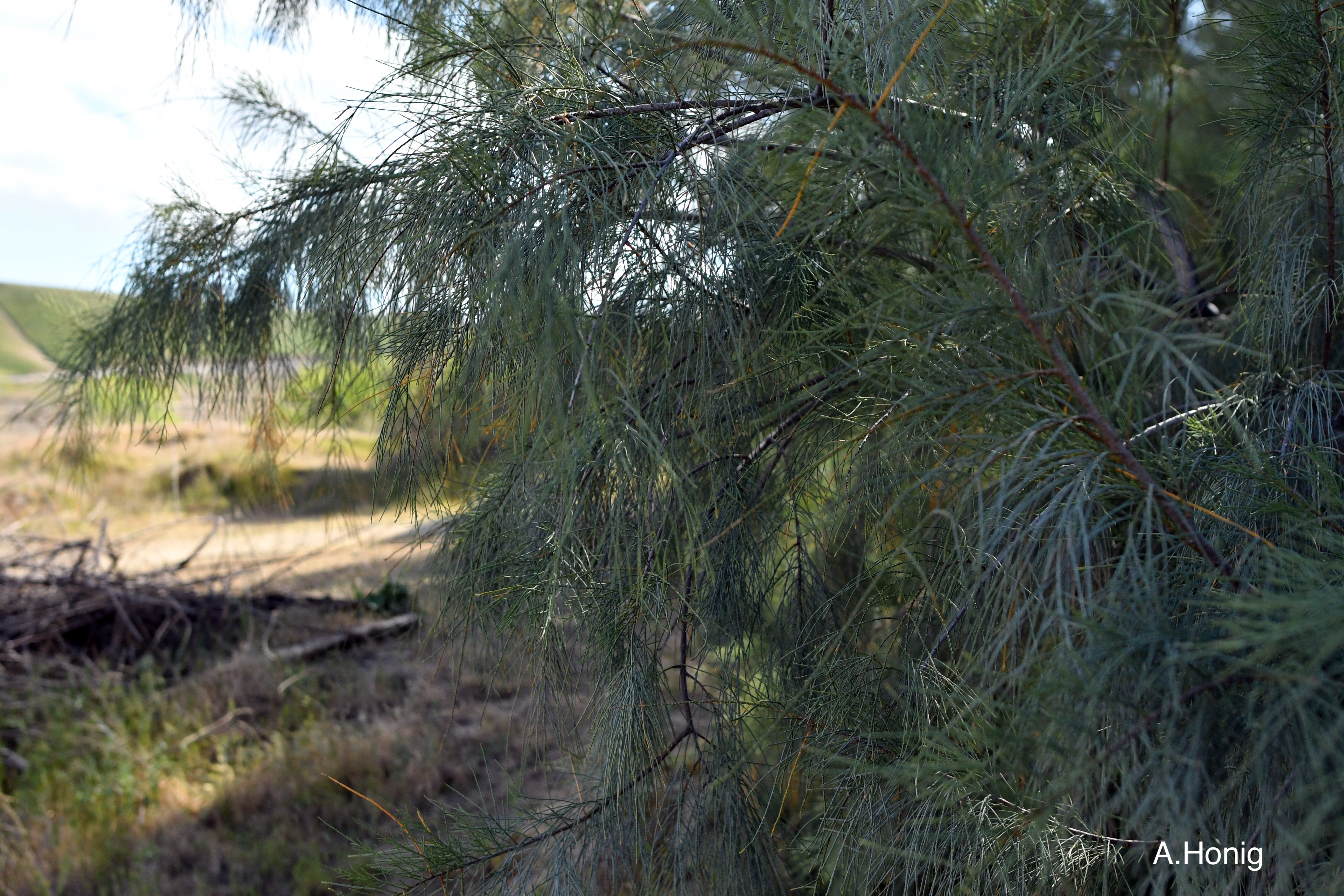
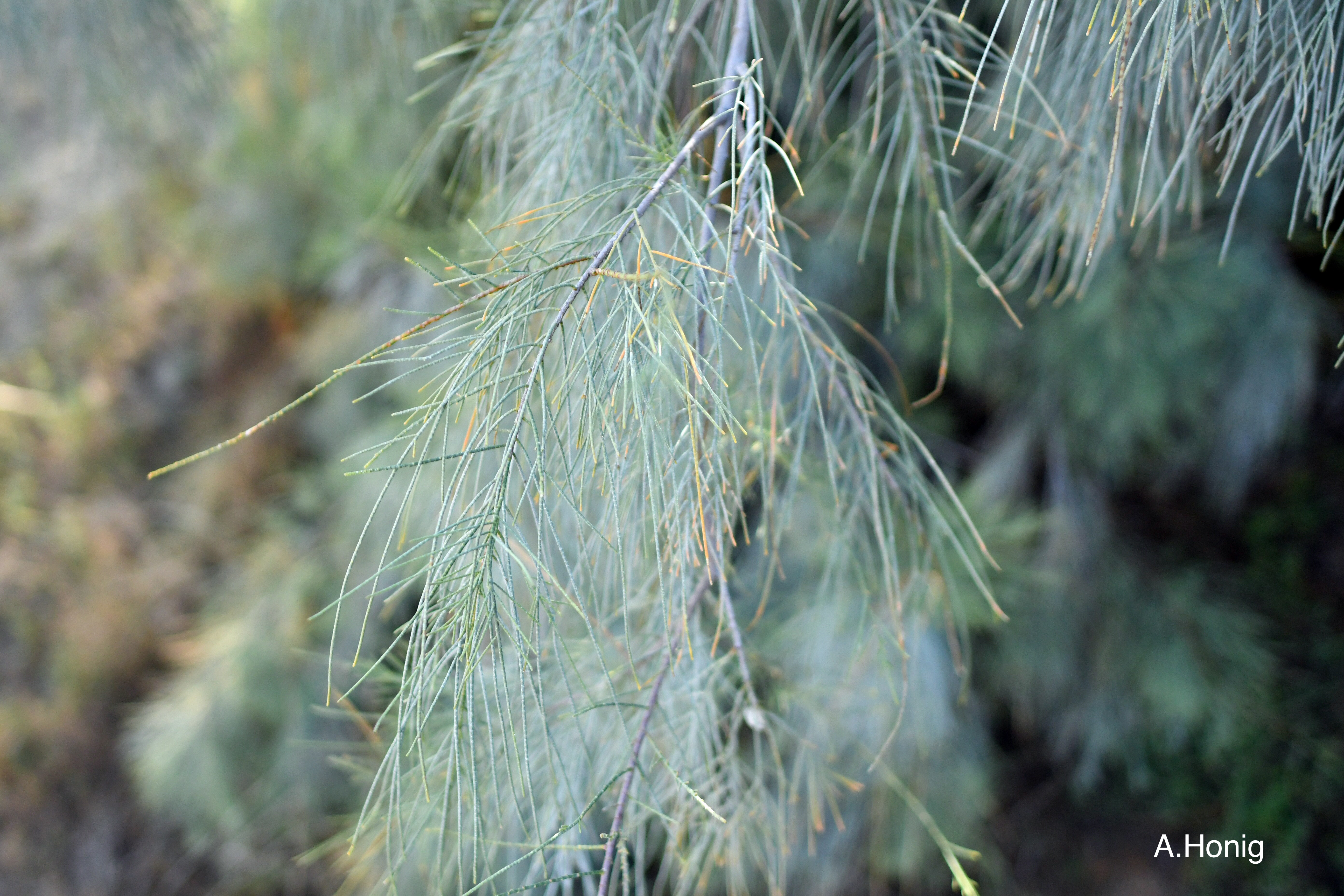
Evergreen, native to North Africa and the Middle East. Often planted in the southwest US as a windbreak. Grows up to 60 feet. Unlike deciduous tamarisk, it generally is not invasive. It is found in a large grove in the eastern end of Panorama Vista Preserve next to the horse trail. The trees probably were intentionally planted there decades ago, but have not spread. At some time in the future, they will be removed as a non-native with low wildlife value. Homeless encampments have frequently been found in this grove.
COCKLEBUR
xanthium spinosum
The hooked barbs of the cocklebur ensure that once it latches onto something, the bur will not easily fall off. The plant's seeds are dispersed when the burs grab onto the fur of a passing animal. Unfortunately, birds have been known to die after getting into a cocklebur plant.
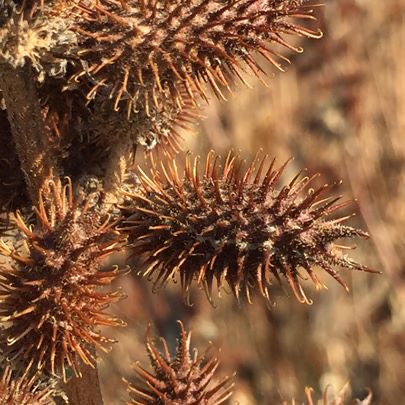
There are two gigantic fig trees like this on the Preserve not far from each other. Their ages are unknown but they were probably “planted” by birds. They set fruit each year but it never matures enough to appeal to humans. Birds and ground squirrels, however, gobble them up. Ordinarily a fig needs fig wasps to pollinate them; it is not known if fig wasps come to these trees.
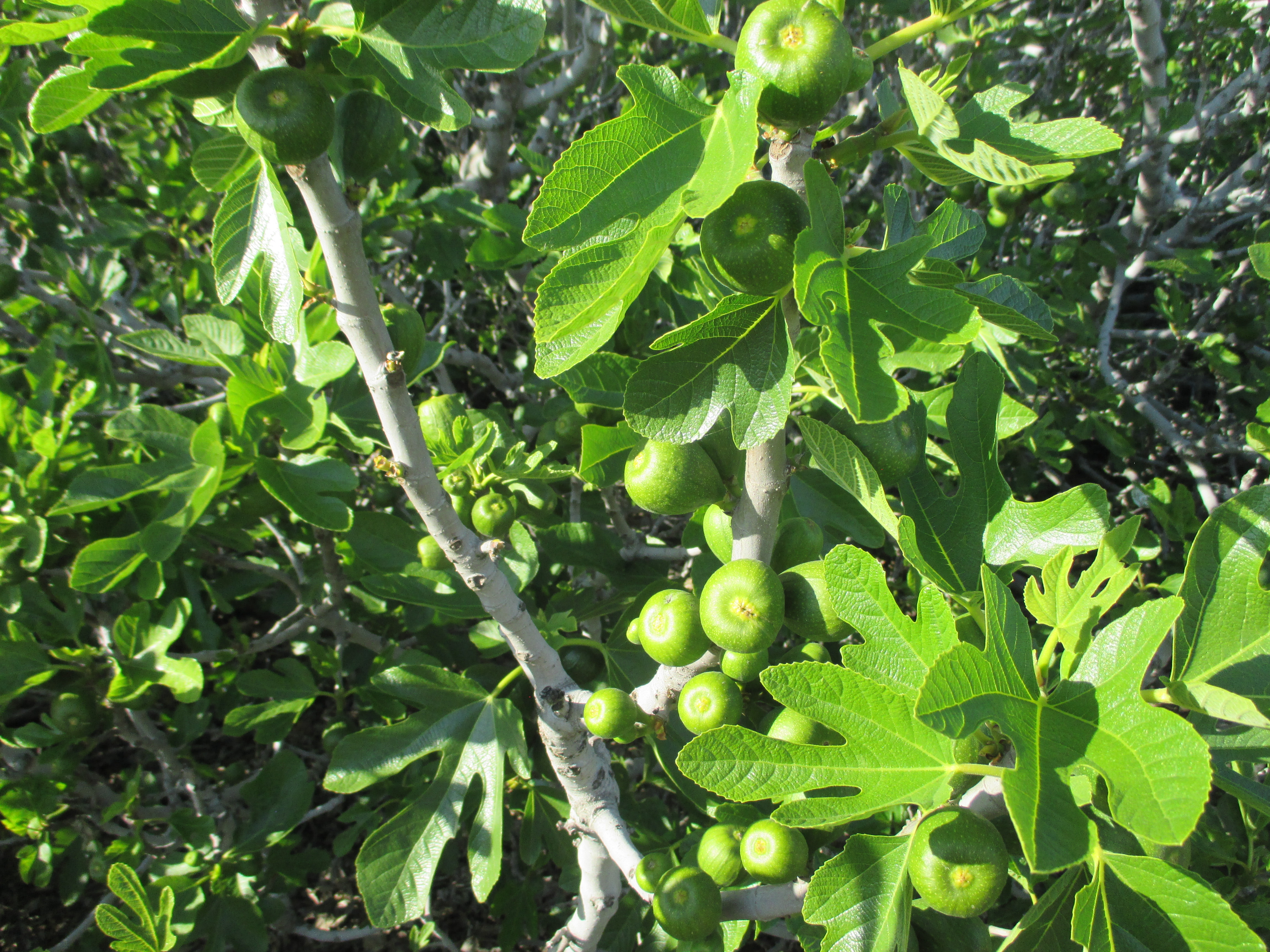
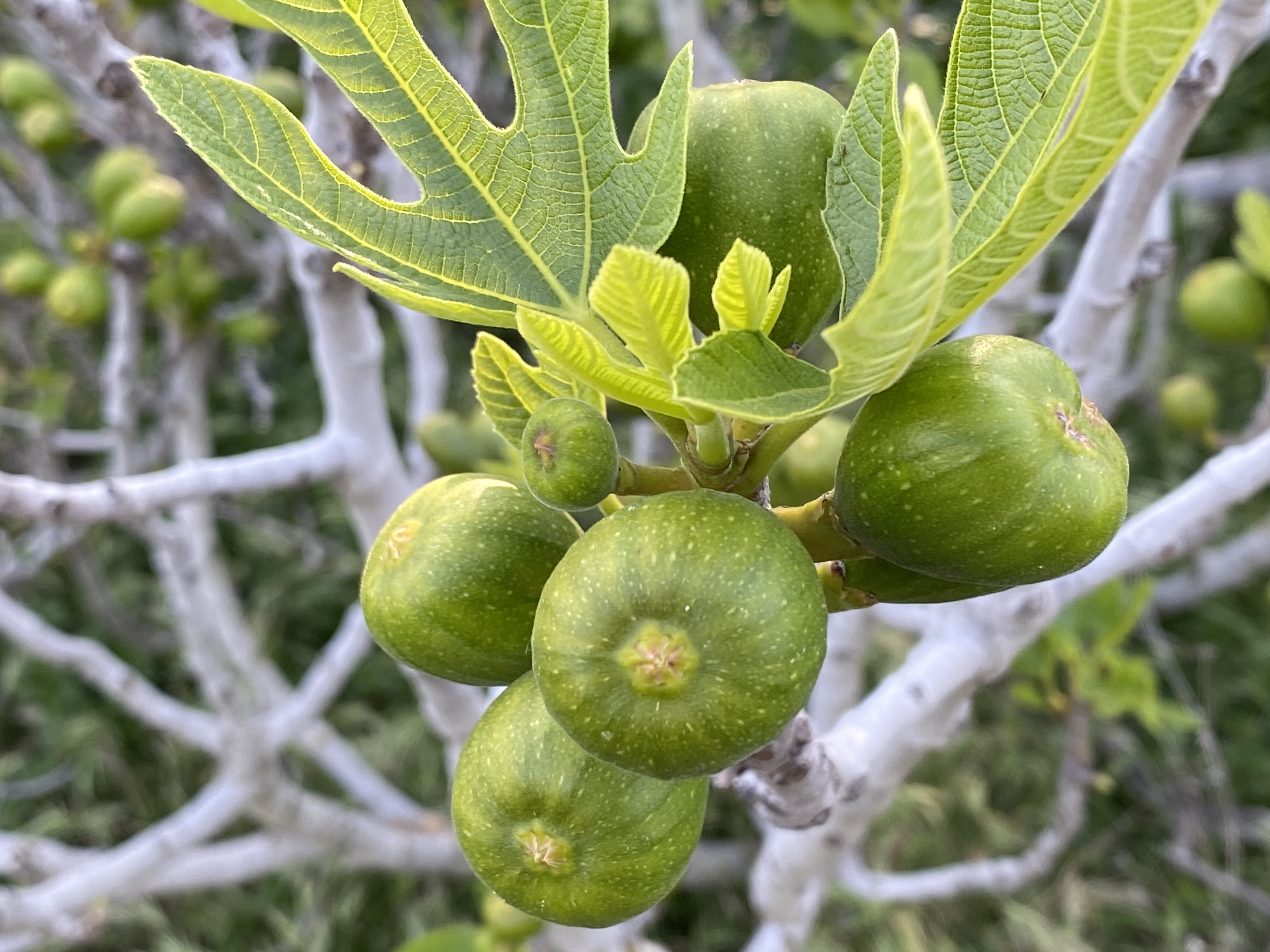
Horehound (Marrubium vulgate) is native to the Mediterranean.
It is a perennial, aromatic shrub found in semi-shaded areas on Panorama Vista Preserve property.
Ernest Twisslmann writes that it was widely “planted by early settlers for medicinal purposes and mostly used as a syrup for respiratory ailments” (Twisselman, Ernest, A Flora of Kern County, California, pg. 328)
MEDITERRANEAN BARLEY
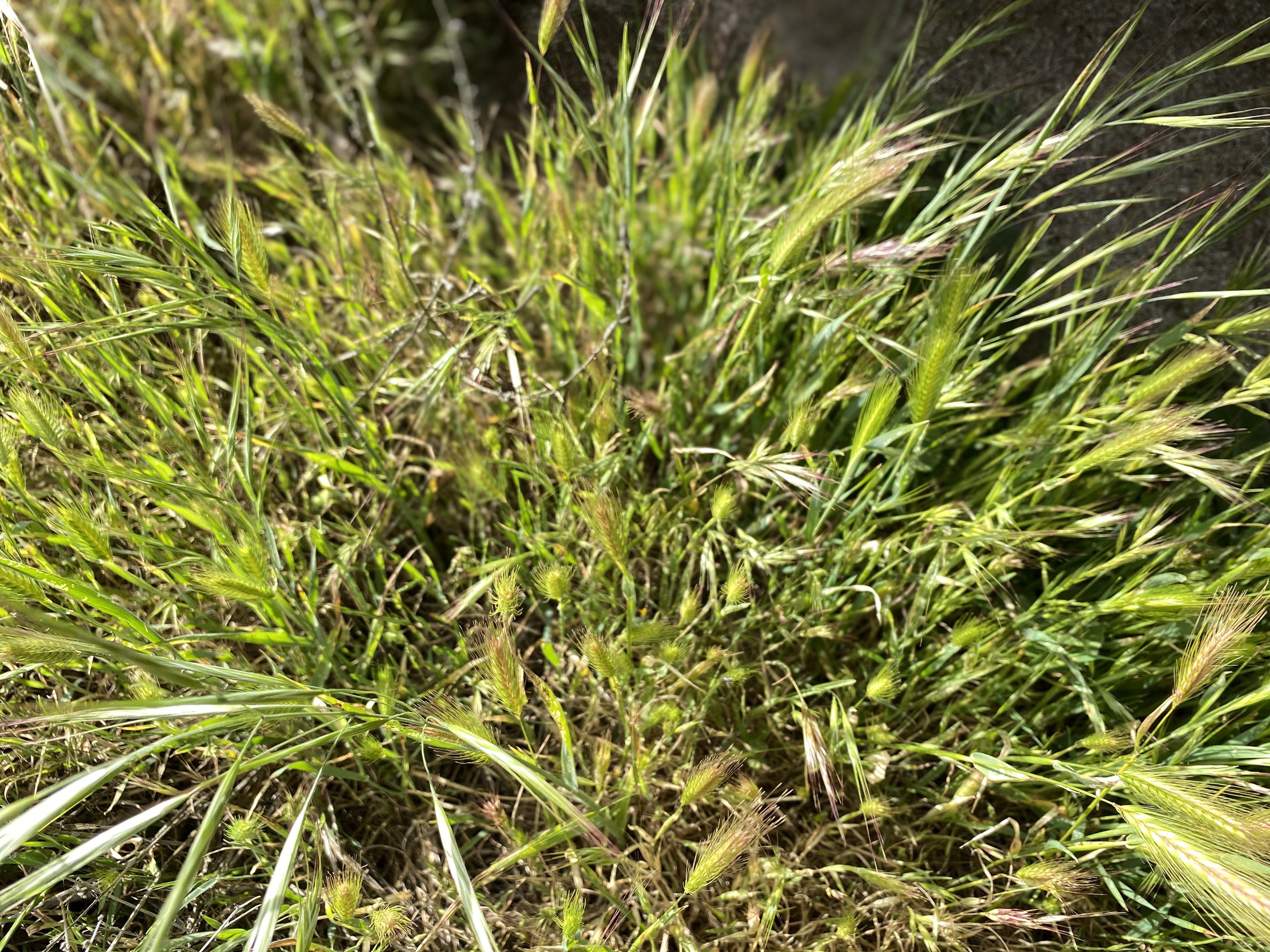
marinum ssp. gussoneanum or Mediterranean barley which is native to the Mediterranean area. Introduced to most of the western U.S.
An invasive widely found at Panorama Vista along with several species of bromes, all noxious.
The cluster of seeds on barleys and other grasses are generally known as foxtails because of their resemblance to a foxtail. The individual seeds are known as grass awns and are characterized by sharp points (sometimes barbed) which will burrow into whatever they land on. The dried foxtails are particularly hazardous to dogs. Humans walking through fields of foxtails grasses find any exposed fabric (e.g., socks) filled with the grass awns. This trait is advantageous to the grass which can readily embed its seed into the ground to establish another generation of grass.
Very flammable when dry. Every year several fires, caused by people, are started in exotic grasses in the Kern River Parkway. Dry mustard plants act as fire ladders if they are also present. These fires often will kill or severely damage established trees. The fires are particularly common on the Panorama Bluffs, where the fire rapidly moves uphill through the grasses when wind is blowing from the north.
Native to the Mediterranean.
This is the most common mustard on Panorama Vista Preserve. It likes disturbad land such as next to a road or trail. It sets many seeds which spread when the dried plant breaks off and rolls away. It reaches 3’ (c.f. Brassica migra, 6’), is common elsewhere in Kern County. The height difference helps roughly distinguish the two.
Many species of mustard are found in California, none of them deliberately planted by Spanish missionaries to mark the Camino Real as popular mythology would have it. This nonsense ignores how fast mustard can spread; it would have quickly obscured the road, which was a simple dirt track.
TREE TOBACCO
(Nicotiniana glauca, Family: Solanaceae (Nightshade) - native to South America; it has spread world-wide; it reached California about a century ago. It can get to be 20+ feet, hence its name, Tree Tobacco.
It is pollinated by hummingbirds, who are attracted by the showy yellow tubular flowers.
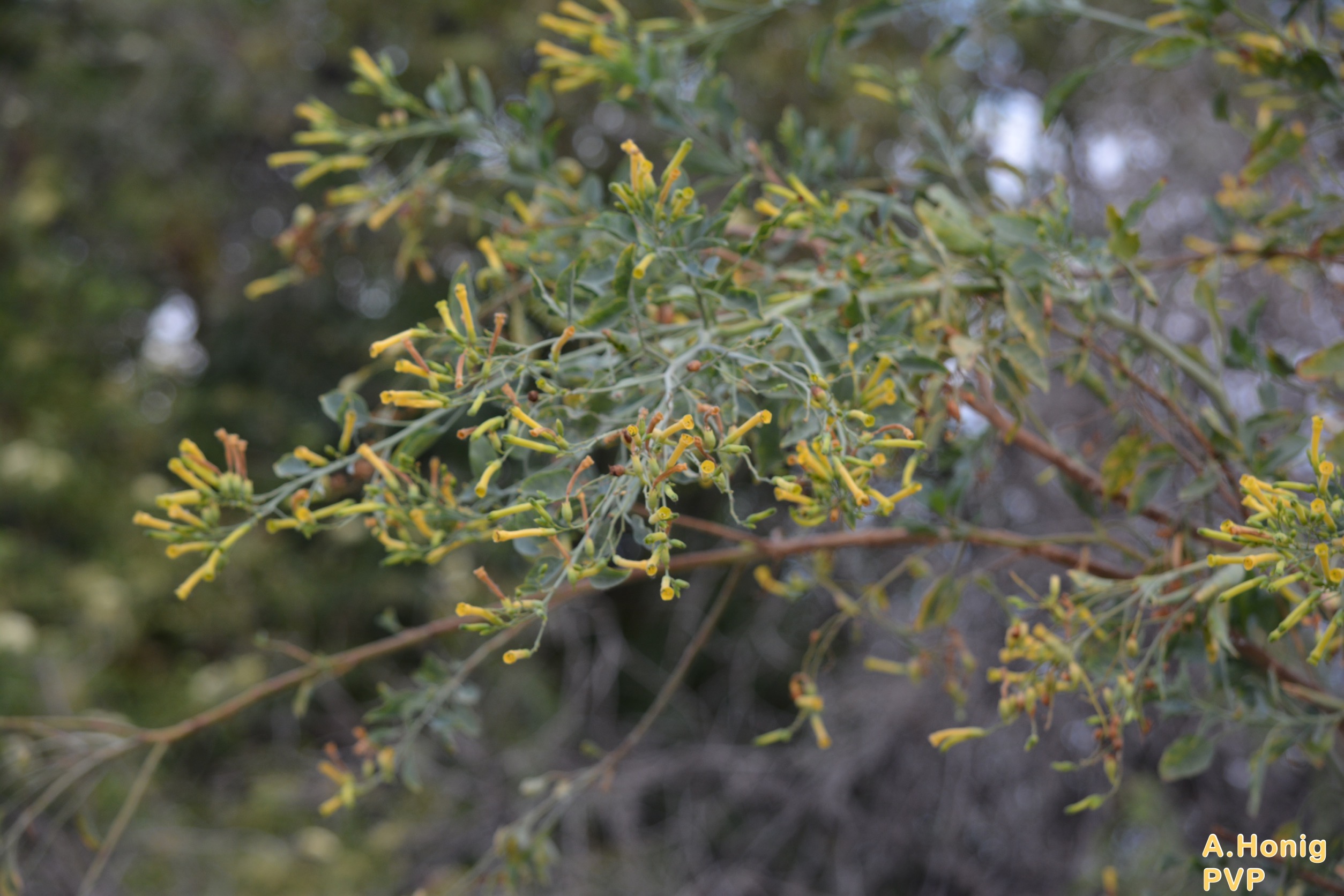
It is also called Indian Tobacco because California Indians cured and smoked it much as they did the native plant N. quadrivalvis.
It’s leaves and stems are said to be poisonous when fresh and uncured.
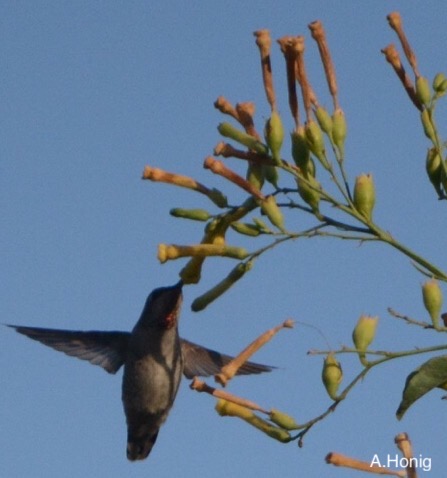
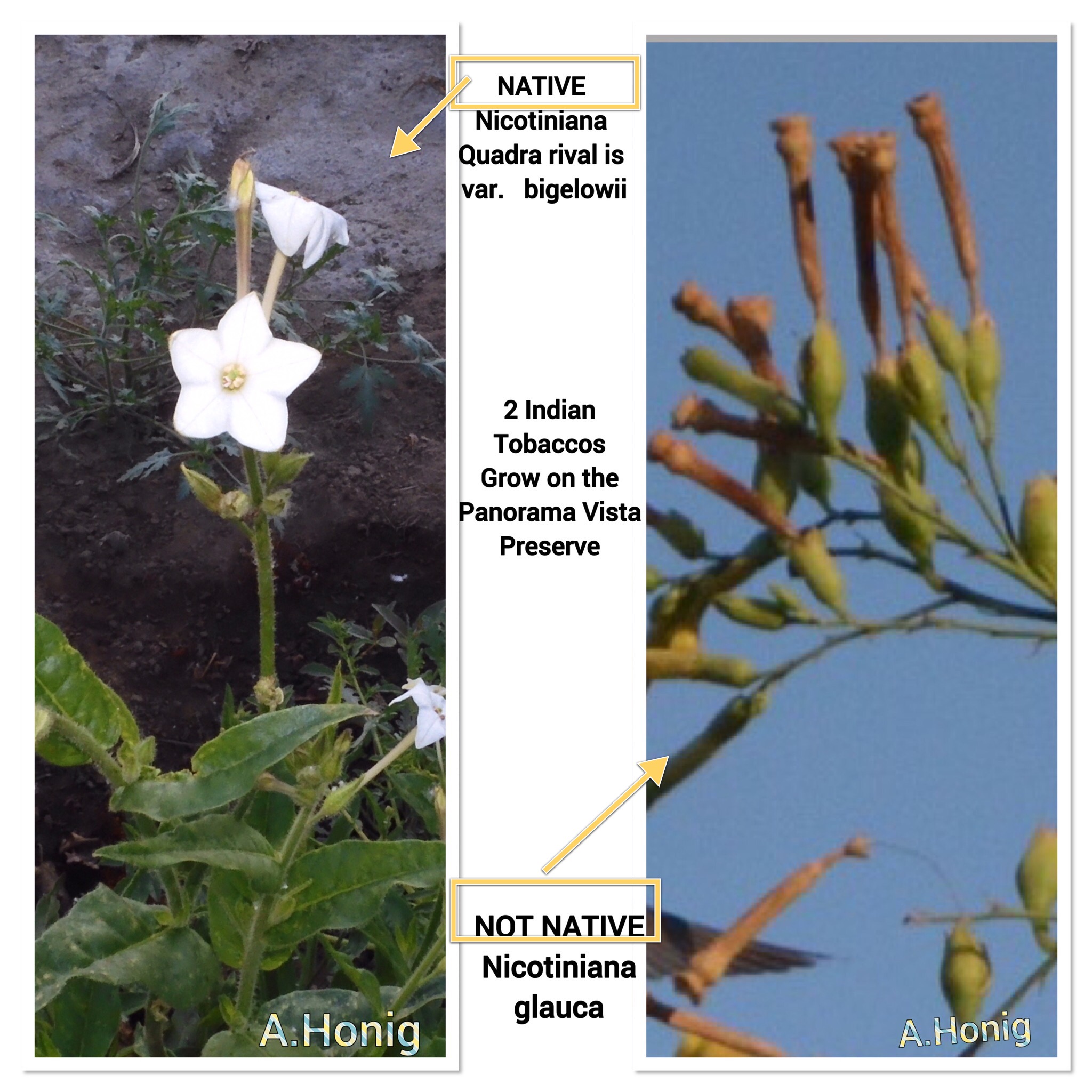
TUMBLEWEED
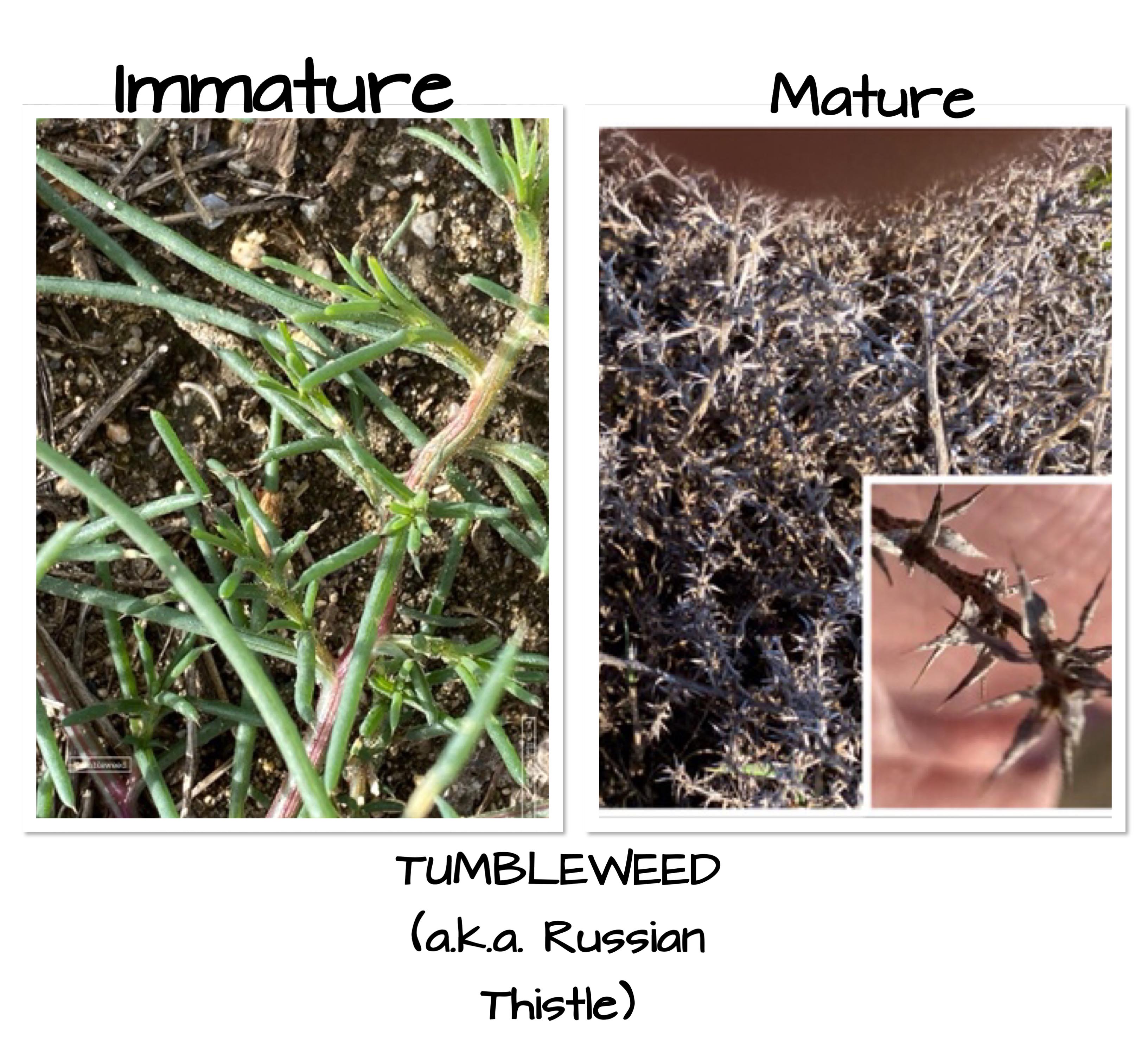
Gene Autry and Roy Rogers enshrined the tumbleweed as an symbol of the Old West in the 1930’s song that is still beloved by cowboy singers. But you got admire the tumbleweed when you get to know them. Young tumbleweed look harmless enough, but as they mature, they becomes a bramble of thin stalks and sharp thorns loaded with a payload of thousands of seeds. After the plant matures, it dries and breaks off at ground level. Wind scatters the seeds as the plants bounce overland. Thorny branches entangle themselves with other plants as they tumble along, "pledging their love to the ground" as the old cowboy song would have it. Tumbleweed seeds waste no time germinating, and investing the land with its progeny. Native plants will be choked out. Meanwhile, the bramble mass moves on until it stacks up 10’ or more against a fence or other structure.
Eradication of tumbleweed is difficult. Digging up young ones is an option but a daunting one given how many sprout up every spring. Nevertheless, volunteers at our local nature preserve, Panorama Vista, give it a good whack-a-mole try. Periodically, PV personnel resort to controlled burning with permits from the San Joaquin Air Pollution District. Tumbleweeds burn ferociously hot and one can only imagine what would happen if a wildfire occurred.
For more information, check out these videos from Youtube:
"The Trouble with Tumbleweed" is especially good for kids:https://www.youtube.com/watch?v=hsWr_JWTZss
"Why Do Tumbleweeds Tumble"https://www.youtube.com/watch?v=dATZsuPdOnM
Native to tropical South America.
Unfortunately sold in nurseries as a decorative water plant. Trouble comes when such plants are dumped in a river, canal, or other open water. The water hyacinth reproduces at an alarming rate. Mother plants produce daughter plants on their stolons; daughters soon produce their own daughters, and so on. Clumps drift down river, join other clumps and eventually form a dense mat. Life in the water underneath turns murky and oxygen levels decline. Native water plants cannot thrive in the gloom. Mud, which supported mollusks and worms eaten by ducks, turns sterile. Fish die. Birds that come to fish can find no food; other birds that come to nibble on native plants or algae are likewise disappointed. As is true so often with alien invasive plants, the health of the native ecology is compromised when alien plants take hold.
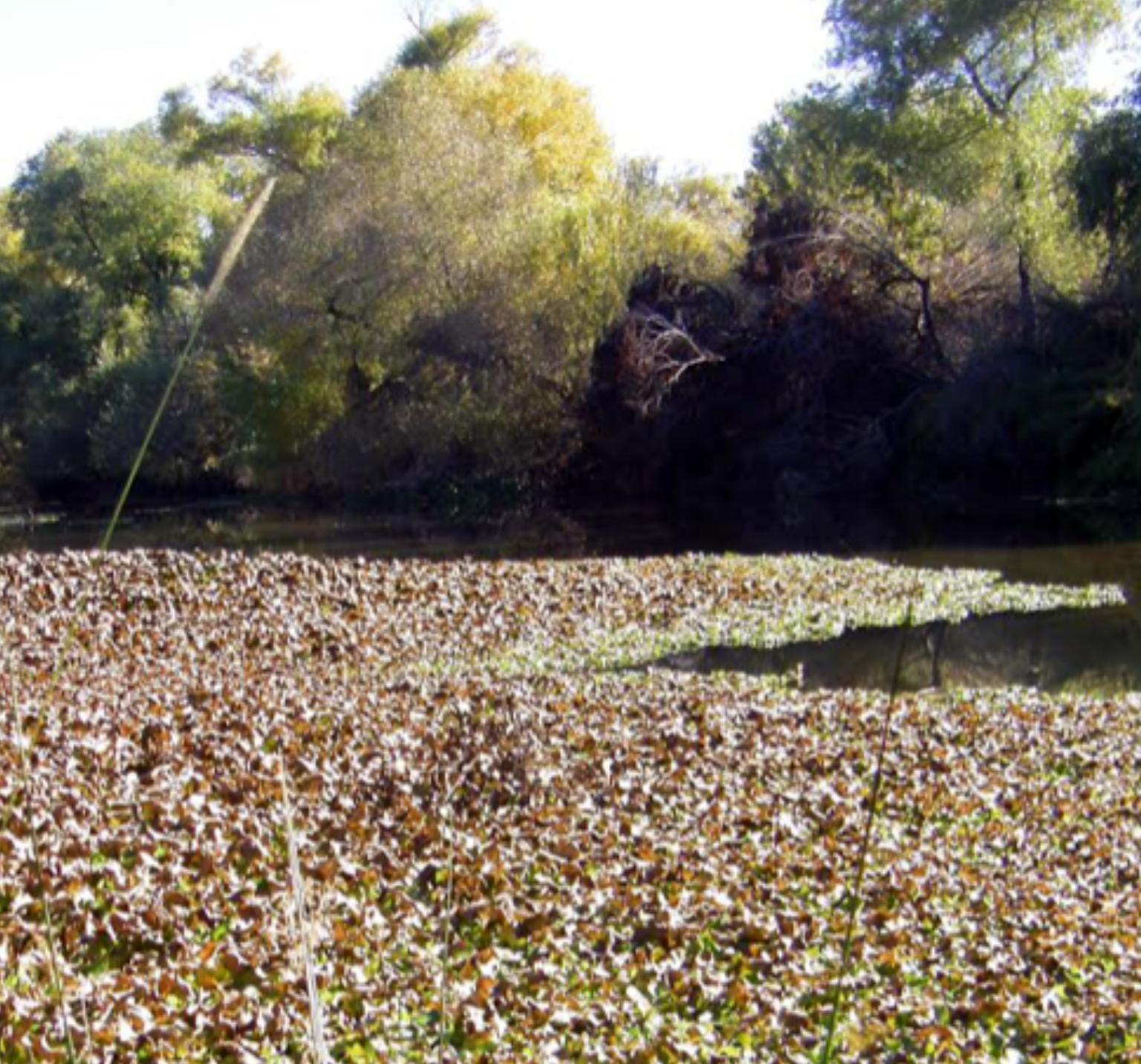
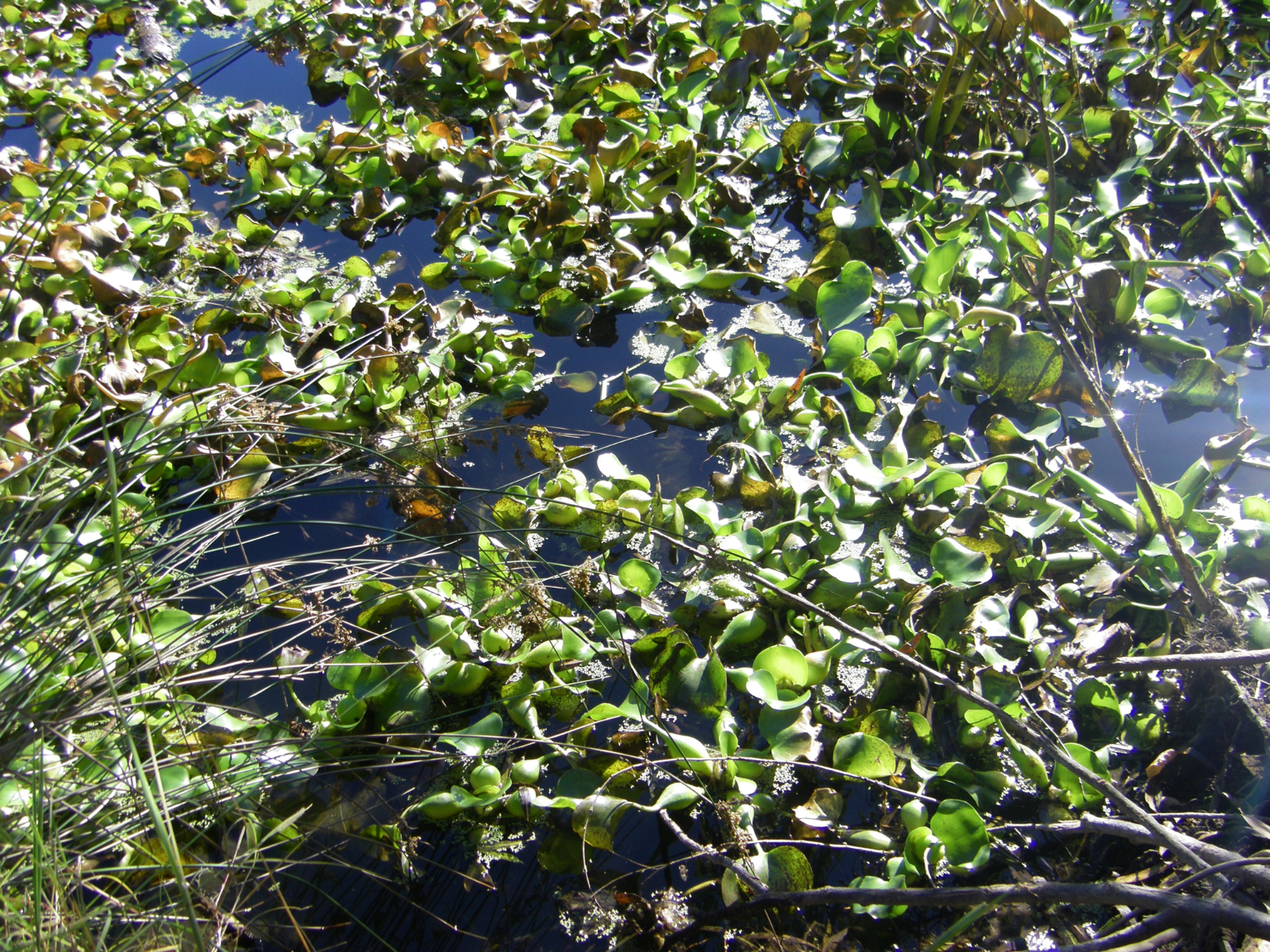
Updated April 8, 2020
© S. Honig
Photos are by Andy Honig or Sasha Honig except where otherwise noted.
